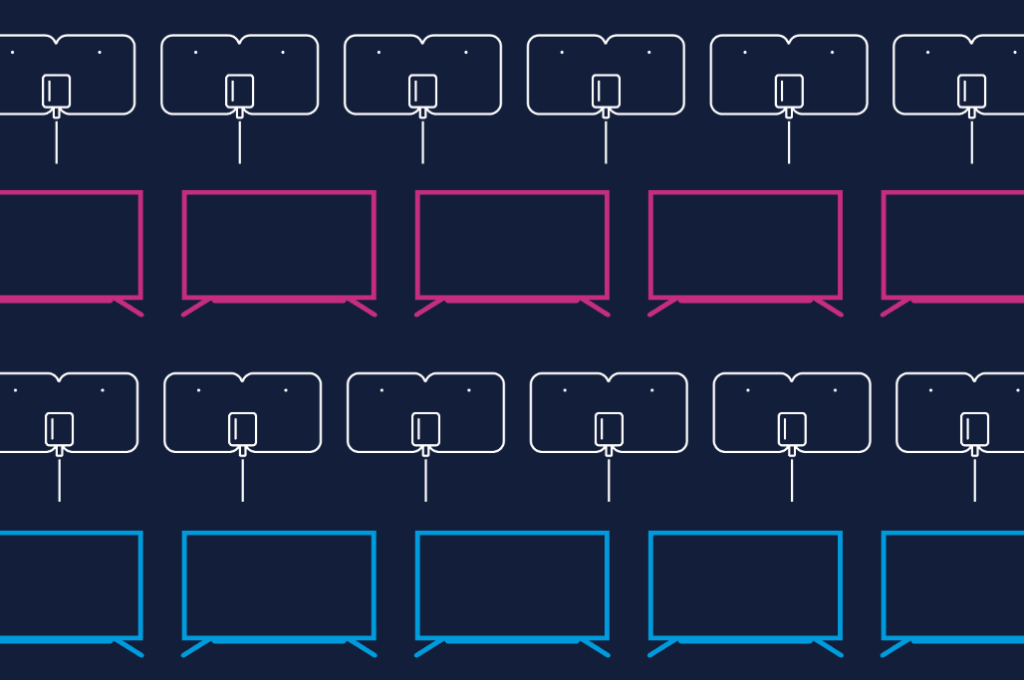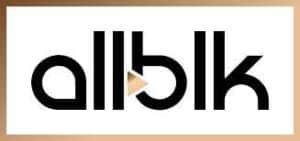
Today’s question comes from Christine, who asks, “Do I need a TV antenna for every television in my home? I’m thinking of switching to free over-the-air TV but I’m not sure what I need to buy.”
When people are considering switching to watching free over-the-air TV, one of the most common questions is whether they will need to purchase an antenna for every television in their home.
The simple answer is no; you don’t need an antenna for every TV. But there are several ways to distribute your TV antenna’s signal throughout your home and reasons why you should avoid using more than one antenna.
Why You Should Not Buy an Antenna for Every TV
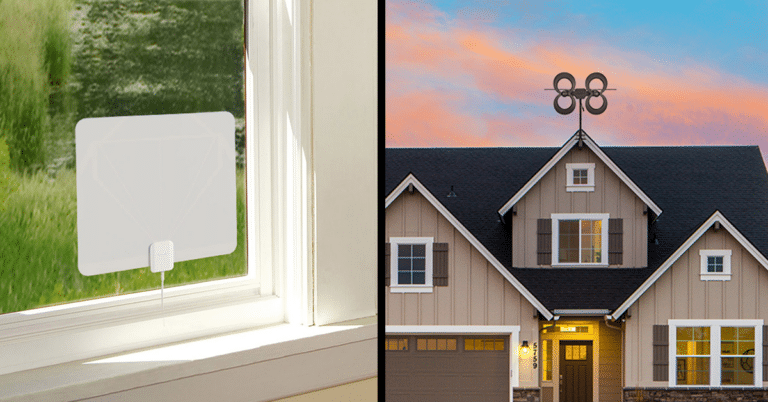
While you could connect a separate antenna to each television in your home to enjoy your local channels, that is not an ideal setup.
Here’s why:
- IT’S EXPENSIVE
The more televisions you have, the more expensive it can be to buy a separate TV antenna for each screen. - YOUR CHANNEL LINEUP MAY VARY
Some of your television sets may not be in an ideal location for TV antenna signal reception. For example, the same make/model of antenna could get 50+ channels in the living room, but only a handful in the basement (if you’re lucky). - YOUR LOCATION REQUIRES A LARGE TV ANTENNA
Those living more than 35 miles from their local broadcast towers will need a larger, more powerful TV antenna to get a strong, consistent signal. It would be impractical and unsightly to have big TV antennas next to every television.
How To Efficiently Distribute Antenna TV Signals in Your Home

Instead of purchasing an antenna for every TV screen in your home, invest in a single quality TV antenna model that meets the specific needs of your area. Install it in the optimal location for reception.
Then use one of these methods to distribute the signal:
- Option #1 – Re-Use Existing Coaxial Cable
If you had cable or satellite television, you may be able to re-use the old coaxial cable for antenna TV signals. Simply connect your TV antenna to the splitter, then connect your TVs to the existing coaxial ports on the wall.
BENEFITS – If the cabling exists, it’s free! You may need to swap out the splitter for one designed specifically for antenna TV.DRAWBACKS – Signal loss can occur with very long cable runs and when multiple televisions are connected to a single antenna. You could even lose reception for channels at the edge of the ‘digital cliff’, especially if the signal is ‘leaking’ out of unused coaxial ports. If the cabling is old or of poorer quality (RG59 versus RG6), you may want to avoid this route entirely.

- Option #2 – Install New Coaxial Cable
Another option is to purchase and install high-quality RG6 coaxial cable and accessories like splitters and distribution amplifiers.
BENEFITS — Starting fresh allows you to install your TV antenna in the best location for reception, versus where the cabling may have been installed for satellite. Having your TV antenna installed by a pro? Running cable is usually included in the installation fee. Installers can also suggest and install accessories, like a distribution amplifier, if needed.
DRAWBACKS – Fishing coaxial cable through walls is not a job that most DIY-ers want to tackle and leaving it loose could create a tripping hazard.
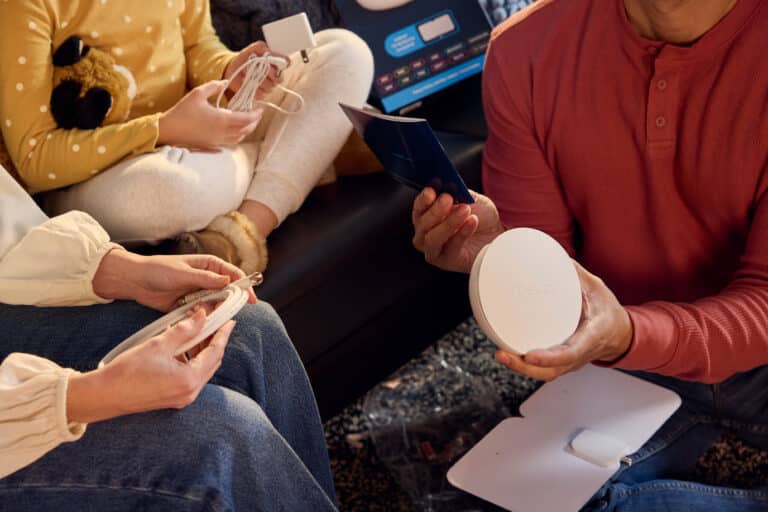
- Option #3 – Use a Network-Connected Antenna DVR
In addition to adding DVR capability, devices like Tablo use your Wi-Fi network to effortlessly distribute signals from a single TV antenna wirelessly to compatible smart TVs and other internet-connected devices throughout your home.
BENEFITS – Using a network-connected antenna DVR like Tablo eliminates many of the downsides and potential signal loss associated with connecting your antenna directly to all your TVs via coaxial cable. Setup is quick and doesn’t involve any tools. Plus, you’ll gain a traditional Live TV Grid guide, recording options and even free streaming channels. This option can also help you place your antenna in a more optimal location for reception, even if that’s not near your main television.
DRAWBACKS – Adding Tablo to your antenna TV setup isn’t free, but it can cost under $100 if you wait for a sale. You’ll also need a strong home Wi-Fi network to stream the content from your Tablo to your compatible TVs and devices to avoid buffering.
As you can see, there’s no reason to buy multi-pack of TV antennas at Costco or Sam’s Club to enjoy free TV on all the televisions in your home. Opting for one of these over-the-air signal distribution methods can be more cost-effective and result in an enhanced antenna TV experience.
Have a question about watching TV that you’d like answered? Send us a note and you may see your question on the Tablo blog and in an upcoming issue of our newsletter, Stay Tuned!



